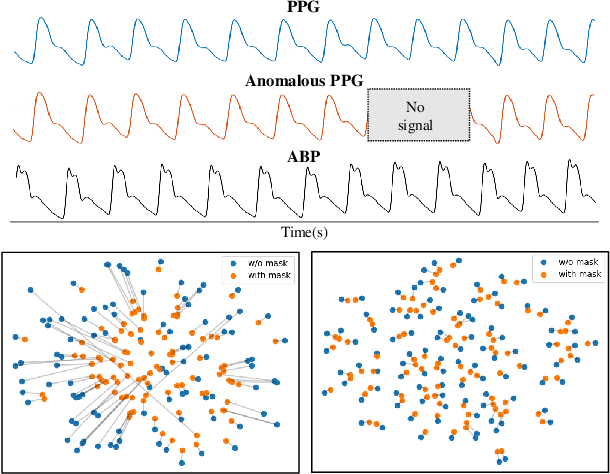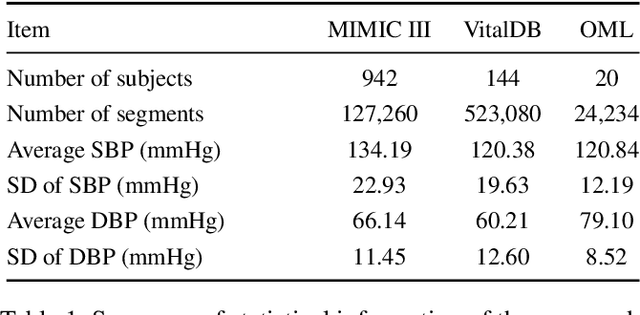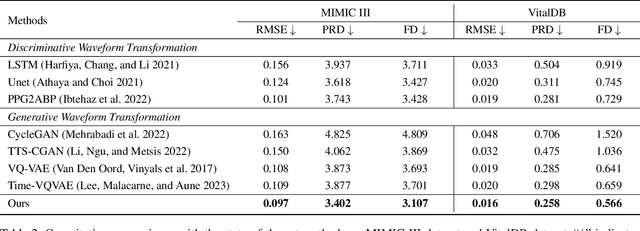Weile Zhang
Constraint Latent Space Matters: An Anti-anomalous Waveform Transformation Solution from Photoplethysmography to Arterial Blood Pressure
Feb 23, 2024



Abstract:Arterial blood pressure (ABP) holds substantial promise for proactive cardiovascular health management. Notwithstanding its potential, the invasive nature of ABP measurements confines their utility primarily to clinical environments, limiting their applicability for continuous monitoring beyond medical facilities. The conversion of photoplethysmography (PPG) signals into ABP equivalents has garnered significant attention due to its potential in revolutionizing cardiovascular disease management. Recent strides in PPG-to-ABP prediction encompass the integration of generative and discriminative models. Despite these advances, the efficacy of these models is curtailed by the latent space shift predicament, stemming from alterations in PPG data distribution across disparate hardware and individuals, potentially leading to distorted ABP waveforms. To tackle this problem, we present an innovative solution named the Latent Space Constraint Transformer (LSCT), leveraging a quantized codebook to yield robust latent spaces by employing multiple discretizing bases. To facilitate improved reconstruction, the Correlation-boosted Attention Module (CAM) is introduced to systematically query pertinent bases on a global scale. Furthermore, to enhance expressive capacity, we propose the Multi-Spectrum Enhancement Knowledge (MSEK), which fosters local information flow within the channels of latent code and provides additional embedding for reconstruction. Through comprehensive experimentation on both publicly available datasets and a private downstream task dataset, the proposed approach demonstrates noteworthy performance enhancements compared to existing methods. Extensive ablation studies further substantiate the effectiveness of each introduced module.
STAR-RIS Enhanced UAV-Enabled MEC Networks with Bi-Directional Task Offloading
Jan 11, 2024



Abstract:A simultaneously transmitting and reflecting reconfigurable intelligent surface (STAR-RIS) enhanced unnamed aerial vehicle (UAV)-enabled multi-user mobile edge computing (MEC) scheme is proposed in this paper. Different from the existing MEC works, the proposed scheme allows bi-directional offloading where users can simultaneously offload their computing tasks to the MEC servers situated at the ground base station (BS) and aerial UAV with the assistance of the STARRIS. Specifically, we formulate an optimization problem aiming at maximizing the energy efficiency of the system while ensuring the quality of service (QoS) constraint by jointly optimizing the resource allocation, user scheduling, passive beamforming of the STAR-RIS, and the UAV trajectory. An iterative algorithm designed with the Dinkelbach's algorithm and the successive convex approximation (SCA) is proposed to effectively handle the formulated non-convex optimization problem. Simulation results indicate that the proposed STAR-RIS enhanced UAV-enabled MEC scheme possesses significant advantages in enhancing the system energy efficiency over other baseline schemes including the conventional RIS-aided scheme.
 Add to Chrome
Add to Chrome Add to Firefox
Add to Firefox Add to Edge
Add to Edge